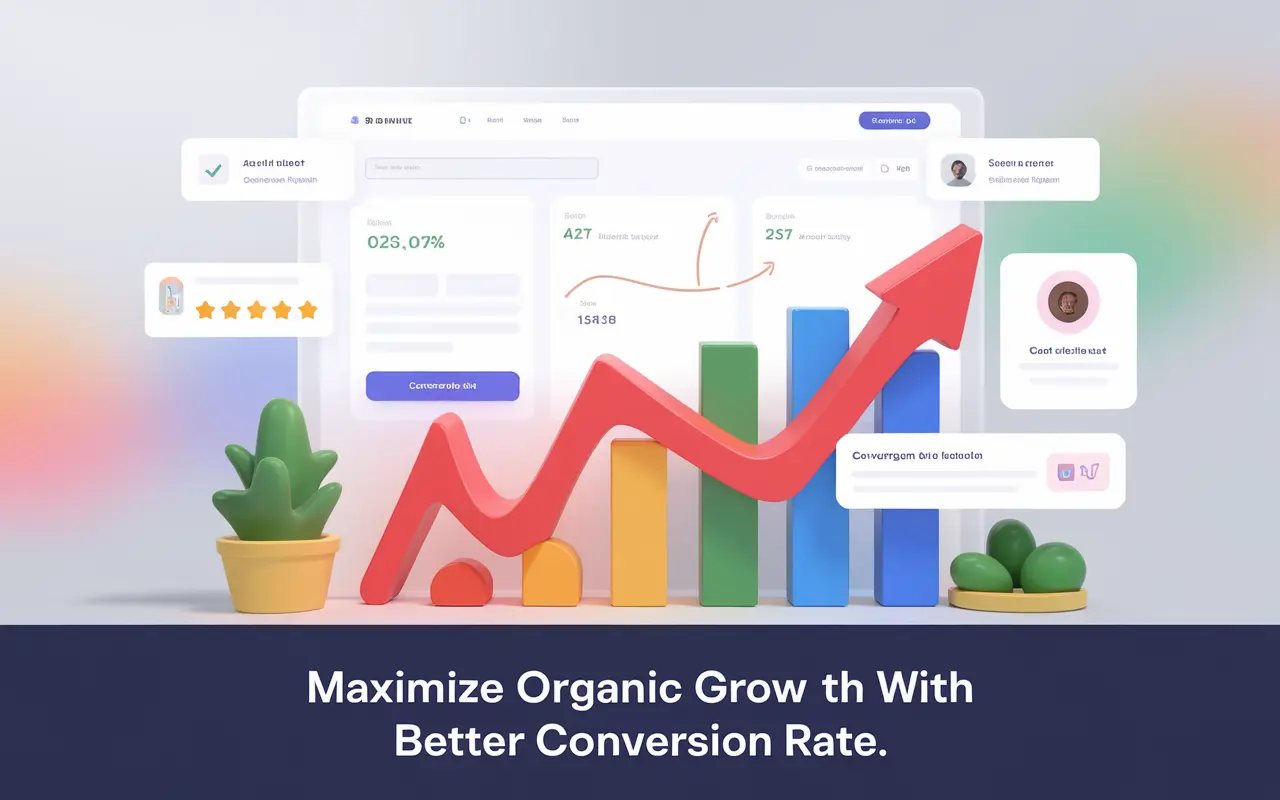Understanding Conversion Rate in SEO: A Key Metric for Online Success
Conversion Rate refers to the percentage of website visitors who complete a desired action—such as making a purchase, filling out a form, or clicking a link—compared to the total number of visitors. It’s a powerful indicator of how effectively your website turns traffic into tangible outcomes. In the context of SEO services, Conversion Rate optimization (CRO) is the bridge between attracting users through search engines and turning them into loyal customers.
Search Engine Optimization helps drive organic traffic, but traffic without action is fruitless. A high Conversion Rate signifies that your content, design, and user experience are aligned with user intent, magnifying the ROI of your SEO efforts.
Key Takeaway
Conversion Rate reflects how effectively your SEO-driven traffic turns into measurable results, making it a crucial KPI for assessing and enhancing your overall digital marketing efforts.
Why Conversion Rate Matters for SEO Success
An effective SEO strategy doesn’t just attract traffic—it converts users into customers, subscribers, or leads. That’s where Conversion Rate becomes hugely important.
Improves ROI from SEO Investments
Even modest improvements in Conversion Rate can dramatically enhance returns from organic search. For example, doubling your Conversion Rate from 2% to 4% means doubling your outcomes without spending more on SEO efforts.
Enhances User Experience (UX)
Google prioritizes websites that provide meaningful, seamless user experiences. Factors like mobile responsiveness, intuitive navigation, and optimized content both improve Conversion Rate and influence organic rankings.
Feeds Core Web Vitals and Behavioral Signals
Conversion-related improvements also affect Google Signals like bounce rates, dwell time, and interaction rates—key decision factors in Google’s ranking algorithms.
Best Practices to Improve Conversion Rate in SEO
- Use Clear CTAs (Calls-to-Action): Guide users with persuasive and visible CTAs like “Buy Now,” “Get a Free Quote,” or “Subscribe Today.”
- Align Content with Search Intent: Match what users are searching for with content that fulfills that intent—whether informational, transactional, or navigational.
- Improve Page Load Speed: Slow-loading websites risk higher bounce rates and lower conversions. Tools like Google PageSpeed Insights help diagnose issues.
- Make Landing Pages Targeted: Each landing page should cater to a specific audience segment with tailored messaging and offers.
- Use Social Proof: Trust signals like testimonials, reviews, and case studies significantly influence buyer confidence and conversions.
- AB Test Changes: Consistent experimentation with headlines, images, and CTA placement allows identification of high-performing content structures.
How Conversion Rate Works in the SEO Process
Traffic Generation vs. Conversion
SEO campaigns focus on generating qualified organic traffic. Conversion Rate optimization ensures that this traffic takes intended actions. Both processes work synergistically—SEO brings the audience; CRO ensures value from that audience.
Technical and Analytical Tools
Using tools such as Google Analytics, heatmaps (e.g., Hotjar), and conversion tracking through Google Tag Manager allows businesses to monitor behavior and identify friction points in the user journey.
Example Flow of Conversion:
User searches “best local SEO agencies” → clicks your search-optimized blog with ranking tips → reads persuasive content with real client testimonials → clicks through to contact form → fills form and submits = conversion completed.
| Metric | Before Optimization | After Optimization |
|---|---|---|
| Monthly Organic Traffic | 5,000 | 5,000 |
| Conversion Rate | 1.2% | 3.8% |
| Leads Generated | 60 | 190 |
Conversion Rate SEO Case Study – From Traffic to Transactions
Problem: High Traffic, Low Conversions
A mid-sized eCommerce business was receiving over 50,000 monthly visitors from Google but conversions were stagnating around 0.7% due to poor mobile experience and unclear CTAs.
Solution: Conversion Rate Optimization Integration
We revamped the mobile UX design, added action-oriented CTAs on high-traffic pages, implemented schema for better product visibility, and included reviews and urgency-driven messages.
Results: Conversion Uplift by 312%
In three months, the site’s Conversion Rate jumped to 2.9%, while revenue from organic traffic grew by 285%. Pages ranking in top-5 also increased due to enhanced behavioral signals.
Common Conversion Rate Mistakes to Avoid
- Neglecting Mobile Optimization: Most users browse on mobile; an unresponsive layout harms usability and conversions.
- Unclear Value Proposition: Users should immediately understand “what’s in it for them.”
- Too Many CTAs: Overloading the user with choices can overwhelm and reduce click-throughs.
- Ignoring Form UX: Long, complex forms deter users. Use minimal fields and autofill where possible.
- No Trust Signals: Lack of testimonials, badges, or social proof keeps users skeptical.
Related SEO Glossary Terms
- Bounce Rate: Measures the percentage of visitors who leave after viewing one page. It’s inversely related to conversion effectiveness.
- Landing Page: A standalone web page optimized to convert traffic from a specific SEO or ad campaign.
- Click-Through Rate (CTR): The ratio of impressions to clicks, a preliminary step before conversion.
FAQs About Conversion Rate
Conversion Rates vary by industry, but a 2%-5% rate is considered healthy for organic traffic. High-performing pages can exceed 10% with strong CRO strategies.
While Google doesn’t directly use Conversion Rate as a ranking factor, behaviors influenced by higher conversions (like lower bounce rates and longer dwell times) do affect rankings.
Divide the number of conversions by total visitors and multiply by 100. For example, 100 conversions / 5,000 visitors x 100 = 2% Conversion Rate.
Tools like Google Analytics, Unbounce, Crazy Egg, and Hotjar help identify user behavior and optimize for higher conversions.
Conclusion: Boosting Organic ROI Through Conversion Optimization
Conversion Rate is not just a metric—it’s a strategic goal that defines website success. High rankings mean little if visitors don’t act. Integrating CRO into your SEO strategy ensures that your organic efforts translate into real, measurable business growth. Start small by improving CTAs, addressing UX pitfalls, and testing consistently. For more insights, explore our full library of SEO strategies.






